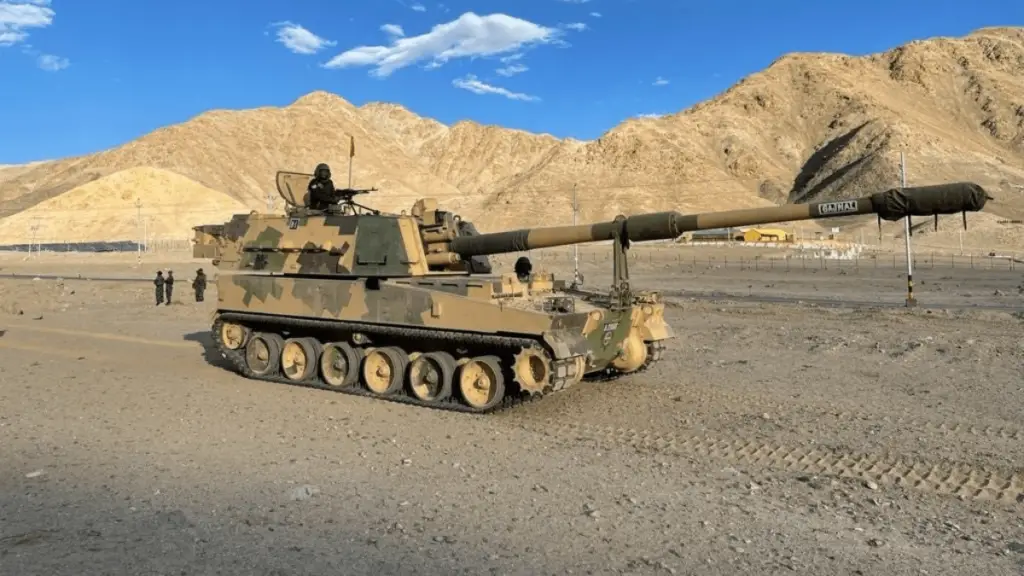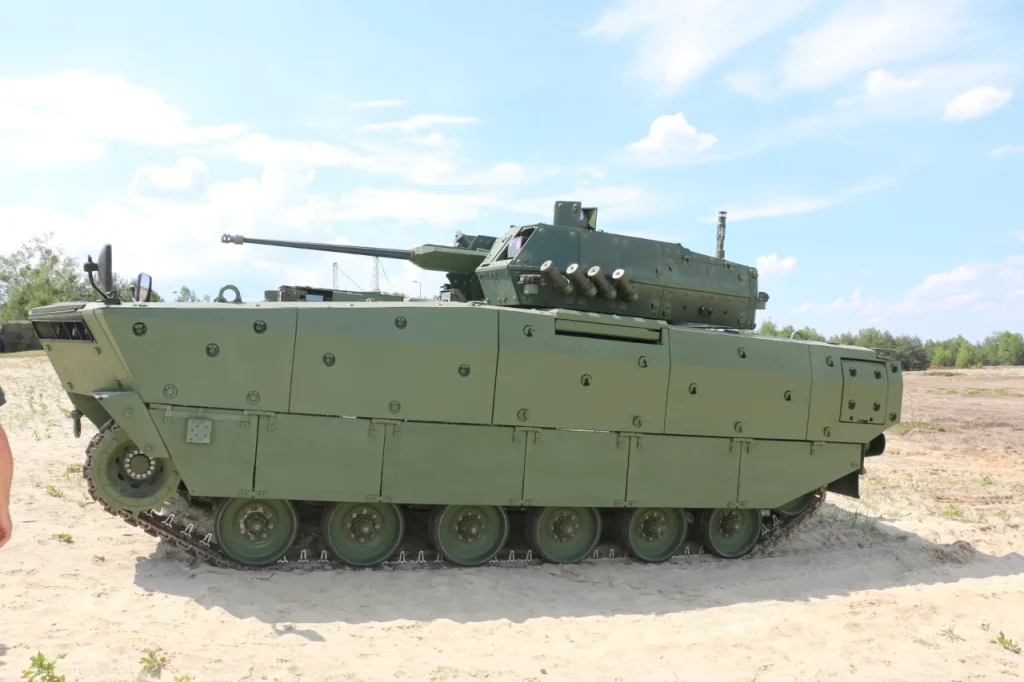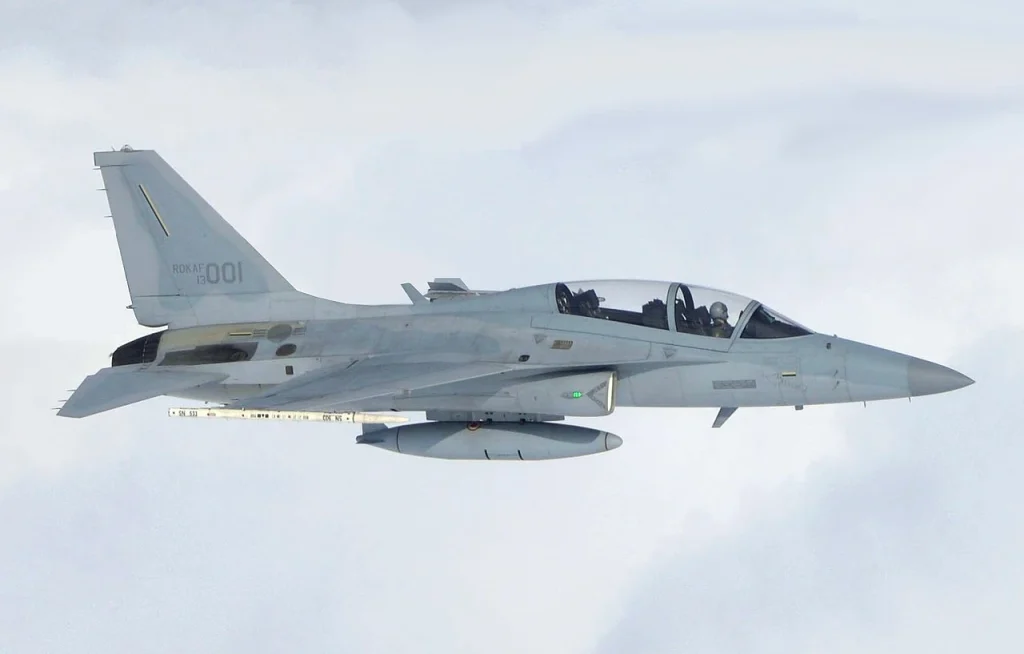Polish Minister of National Defense Mariusz Blaszczak said on July 24 that his country intends to create the strongest land forces among European NATO countries.
Jaroslav Wolski, a Polish military columnist, invited Krzysztof Platek, the press spokesman for the Polish Armaments Agency (Agencja Uzbrojenia), to his show Wolski o Wojnie, where Platek exposed the Polish military’s grandiose weaponry ambitions. Poland will significantly improve the capabilities of its armed forces and the military-industrial complex in the next years with the assistance of South Korea.
South Korea – a strategic military partner of Poland
According to the press spokesman, Poland must drastically strengthen its armed forces within a few years. South Korea can help with this – it is one of the few countries that can quickly deliver a huge amount of military equipment to Poland and share its know-how. France, Germany, Great Britain and Italy do not have such military-industrial capabilities plus the necessary political will.
The extensive transfer of know-how from South Korea to Poland, the complete transfer of the production of state-of-the-art Korean military equipment, the building of a complete service and training ecosystem, and the joint development of a new generation of weapons are the main advantages of Polish-Korean military cooperation. The South Koreans will practically build a new Polish arms industry. South Koreans don’t have, unlike the Americans, bureaucratic, political, geopolitical and “cultural” obstacles.
Platek emphasized that the Polish army will replace all tanks and howitzers donated to Ukraine by 2025. At the same time, larger deliveries of Korean weapons will begin this year, and from 2026, the production of Polonized Korean military equipment will be produced in Poland.
Tanks
116 US stock M1A1 SA tanks will arrive in Poland in 2023 and 2024. Delivery includes support vehicles, spare parts and ammunition. Poland will therefore get two fully equipped and combat-ready tank battalions (2×58 tanks). At the same time, discussions for the transfer of American tank know-how to Poland are underway, led by the Polish firm PGZ (Polska Grupa Zbrojenoviwa).
But Platek says the backbone of the Polish tank forces will be Korean-Polish K2PL tanks.
According to the press spokesman, although the American M1A2 SEPv3 has no competition, the much lighter and more mobile K2 will perfectly complement the Abrams in Polish conditions. The K2 does not have as strong armour as the Abrams, but its relatively low weight (55 tons vs SEPv3 69 tons) makes it suitable for quickly crossing waterways and manoeuvring in difficult terrain. The electronics, sensors and fire control system of the K2 are at the top level.
Poland intends to assign very heavy infantry fighting vehicles (BVP, probably KS21 RedBack ) to the Abrams. Conversely, the lighter and much more mobile K2 tanks will be complemented by the amphibious BVP Borsuk (IFV).
It is known that 366 Abrams will be taken over by the heavy 18th mechanized division, which protects the capital Warsaw from the east between the Bug and Wieprz rivers. This division will not have to cross any large rivers in its area of operation, and at the same time, it must withstand the greatest onslaught of the enemy (Russia, Ed)who will try to reach Warsaw quickly.
Poland will receive the first K2 tanks in storage this year. Others will be newly produced. The first K2 tanks will receive Polish communication systems and (Polish or foreign) battle management systems (BMS) compatible with the BMS introduced in the Polish army. This rapid initial delivery of 180 Korean K2 tanks (three battalions) will take place by 2025. This will quickly close the gap after the donated T-72 and PT-91 to Ukraine. After 2026, these tanks will be upgraded to the latest K2PL standard. Thus, by 2025, Poland will acquire 116 M1A1 SA tanks and 180 K2 tanks.
At the same time, Poland and South Korea will work on an improved version of the K2PL with better armour as the current K2 has weak armour. Even the Norwegian version of K2NO already has more advanced armour. Among other things, K2PL will get a camera system with 360° coverage (apparently with autonomous target search), similar to what SEPv3 has, as well as the Korean active protection system KAPS. KAPS will drastically increase the tank’s protection against anti-tank guided missiles and other “slow” flying anti-tank ammunition (a wide variety of cumulative ammunition).
A complete training centre for K2 tank crews will be established in Poland, including state-of-the-art simulators. The South Korean army will help train Polish tankers directly in South Korea.
Platek said South Korea would build a new factory for the complete production of Korean-Polish K2PL tanks in Poland, apparently within the HSW (Huta Stalowa Wola) company. The Korean power packs are to be manufactured (or assembled) under license in Poland. It will be a family of engines for K2PL tanks and K9PL self-propelled howitzers. At the same time, a complete base for servicing K2PL tanks will be established in Poland.
By 2026, the new factory for the Polish army will gradually produce 820 K2PL tanks. So the Polish army wants 1000 K2PL tanks. 180 K2 tanks will be upgraded to the K2PL version. K2PLs and 366 Abrams correspond to equipping six mechanized divisions.
However, for the rapid and massive production of K2PL, it is necessary to import components. Thanks to the massive purchase of South Korean technology and know-how, Poland will become the centre of Korean industry in Europe. In addition, Poland and South Korea are to work together on the new generation K3 (K3PL) tank, which will be produced in Poland and South Korea. This tank can have a 140mm cannon. The current K2 is already ready to install a cannon of this calibre.
Among other things, Poland will contribute to the joint development with information and experience from the operation of American Abrams.
Self-propelled howitzers
Poland will receive 48 K9A1 155 mm self-propelled howitzers from 2022 to 2023 with the Polish Topaz fire control/combat system. This year, 18 stock K9A1 howitzers will arrive. This delivery will close the gap created by donating Polish AHS Krab howitzers to Ukraine. After 2026, all K9A1 howitzers will be upgraded to the K9PL standard.
He said, “HSW is very busy”, producing more Krabs. According to the 2016 contract, HSW must produce 96 Krab howitzers for the Polish Army until 2024 and, at the same time, 54 Krabs for the Ukrainian Army. This will last until 2026. Polish Ministry of Defense will order another 48 Krab howitzers, two divisions of 24 howitzers each.

From 2026 HSW will start producing the K9PL howitzer based on the latest Korean K9A2 howitzer. It is characterized by a fully autonomous charging system for bullets and powder cartridges. The K9A1 version has “only” autonomous (with light crew assistance) missile loading. But as early as 2024, Poland will acquire South Korean-made K9PL howitzers, first based on the K9A1 version and later on the K9A2. In particular, the K9PL version will get Polish communication equipment and the Topaz system. All Polish HIMARS rocket launchers, Ottokar Brzoza tank destroyers and Warmate kamikaze drones will also get Topazes.
Poland is also interested in the Korean K239 Chunmoo rocket launchers. At the same time, another Polish WR-40 Langusta II 122 mm rocket launcher will be purchased this year. Chunmoo uses 122mm, 227mm and 239mm bullets. Licensed production of Korean rocket launchers and rockets is again in play.
Poland intends to produce 692 K9A1 and K9PL howitzers on its territory and import them from South Korea by 2024. At the same time, the K9A1 will later be upgraded to the K9PL standard with a fully autonomous charging system.
HSW is supposed to produce the K9PL howitzers, the current Krab howitzers, and then the new generation K9PLA3 howitzers (the successor to the Krabs). It is supposed to be a new howitzer created with Korean and Polish cooperation. When developing the K9PLA3, Poland will use the experience of deploying Krabs in Ukraine.
HSW will continue to produce the current Krabs after 2026 until the K9PLA3 is ready for series production. All howitzers produced in Poland (or HSW) will share a maximum of common components. Even the current Krab uses the chassis and drive unit from the K9.
As a result, Poland intends to operate around 800 self-propelled howitzers of 155 mm calibre. At the same time, Platek emphasized again in the interview that not only will a complete service facility for K9 howitzers be created in Poland, but all key components, including engines, gearboxes and transmissions, are to be produced or assembled.
Infantry Fighting Vehicles
Platek denied reports of the purchase of an older Korean IFV K21 with a 40mm cannon. The Polish army will buy 1,000 IFV Borsuk, probably up to 1,400, and integrate them into mechanized and tank battalions. The light, extremely mobile and amphibious IFV Borsuk will complement the K2PL tanks and the German Leopard 2 until their retirement after 2030.
At the same time, Poland is seriously considering the purchase of South Korean AS21 Redback heavy IFVs. These IFVs are to be fully imported from South Korea. As stated earlier, the heavy Redbacks with SEPv3 tanks were supposed to protect Warsaw in the 18th division and absorb the heaviest onslaught of the Russian army.

In the case of the AS21, the Polish ZSSW-30 combat module is also expected to be installed. But it will still be subject to negotiation.
At the same time, Warsaw and Seoul are solving the issue of wheeled armoured vehicles. In 2023, Poland’s license to manufacture Rosomak (Finnish Patria AMV) armoured vehicles expires. So the production of Polish-Korean wheeled armour in Poland is offered based on the Korean K806/K808 platform.
FA-50
The purchase of Korean FA-50 light fighters versus buying more F-16s debate continues. According to Platek, the FA-50 can be described as the biggest “gap filler” of all purchases. The main reason is again the speed of delivery. South Korea can deliver the FA-50 very quickly, which will allow the Polish Air Force to decommission the MiG-29 and Su-22. At the same time, Platek said the Polish Air Force needs 160 multipurpose tactical supersonic aircraft to fulfil all tasks.

The first 12 FA-50 Block 10s (with very limited combat capabilities) will arrive as early as next year. The much more advanced 36 FA-50PL (based on the FA-50 Block 20), with AESA radar, Sniper pod, AIM-9X missile integration (likely AMRAAM and Brimstone ) and Link 16, will arrive in 2023. The FA-50PL version will later they will also receive FA-50 Block 10. The Polish Air Force will replace its MiG-29s and Su-22s with 48 FA-50PLs. In addition to the speed of delivery, Platek emphasized the commonality of many components between the FA-50 and the F-16.
A complete service facility and training centre is to be established in Poland again. At the same time, Polish pilots had already become familiar with the FA-50 during several flights in South Korea.
Around 2025 the Polish Air Force may have 32 F-35A Lightning II, 48 F-16C/D Block 50/52, 48 FA-50 and 16 training M-346 Bielik, which can be used in a limited way for combat tasks.
Platek mentioned the Korean multipurpose KF-21 Boramae supersonic aircraft, which made its first flight a few days ago. Poland is also interested in purchasing this twin-engine aircraft. He said the goal is to operate 160 “fighters”.
